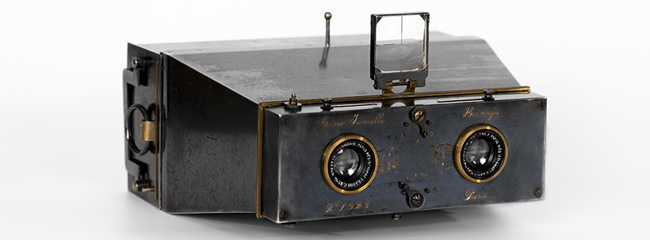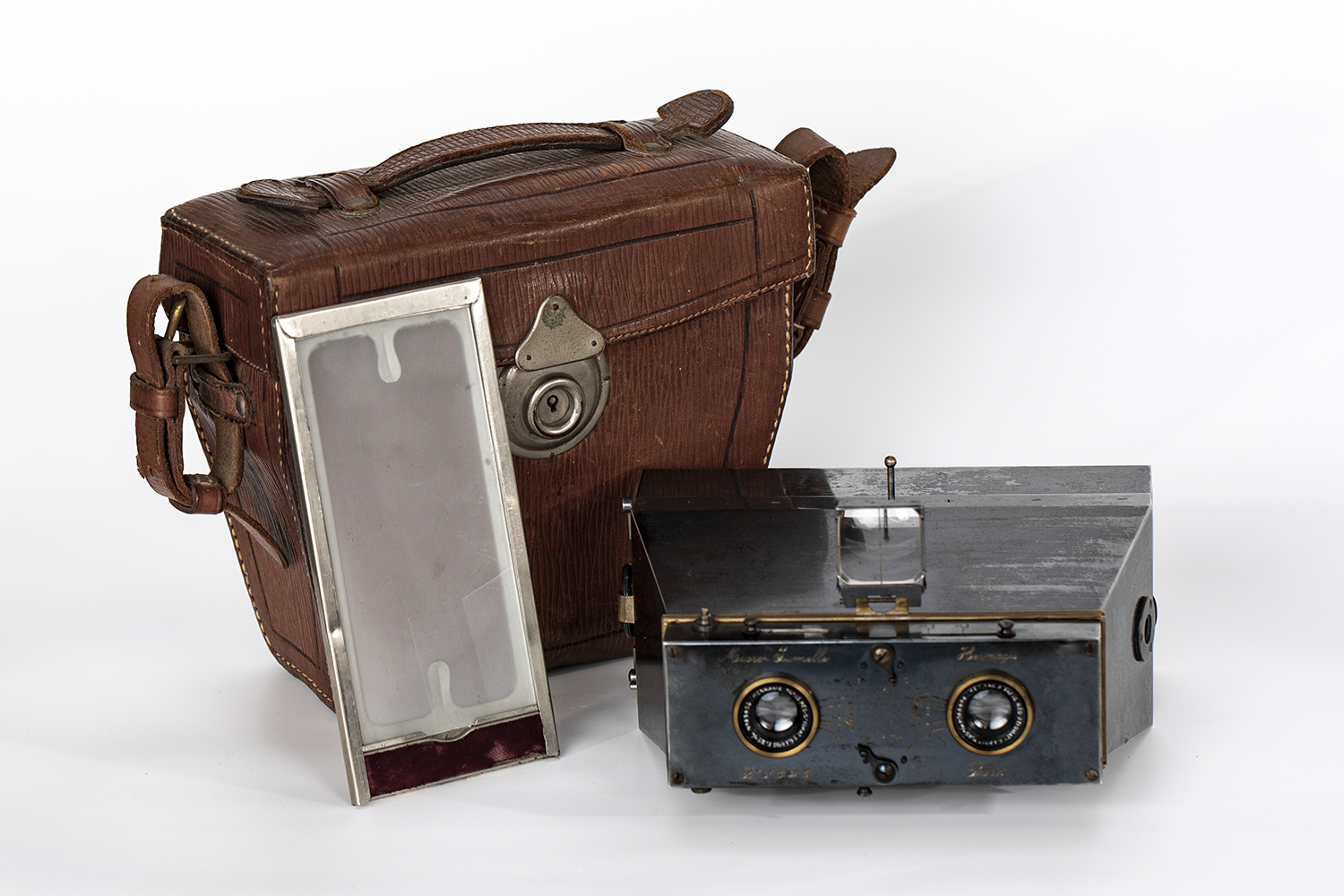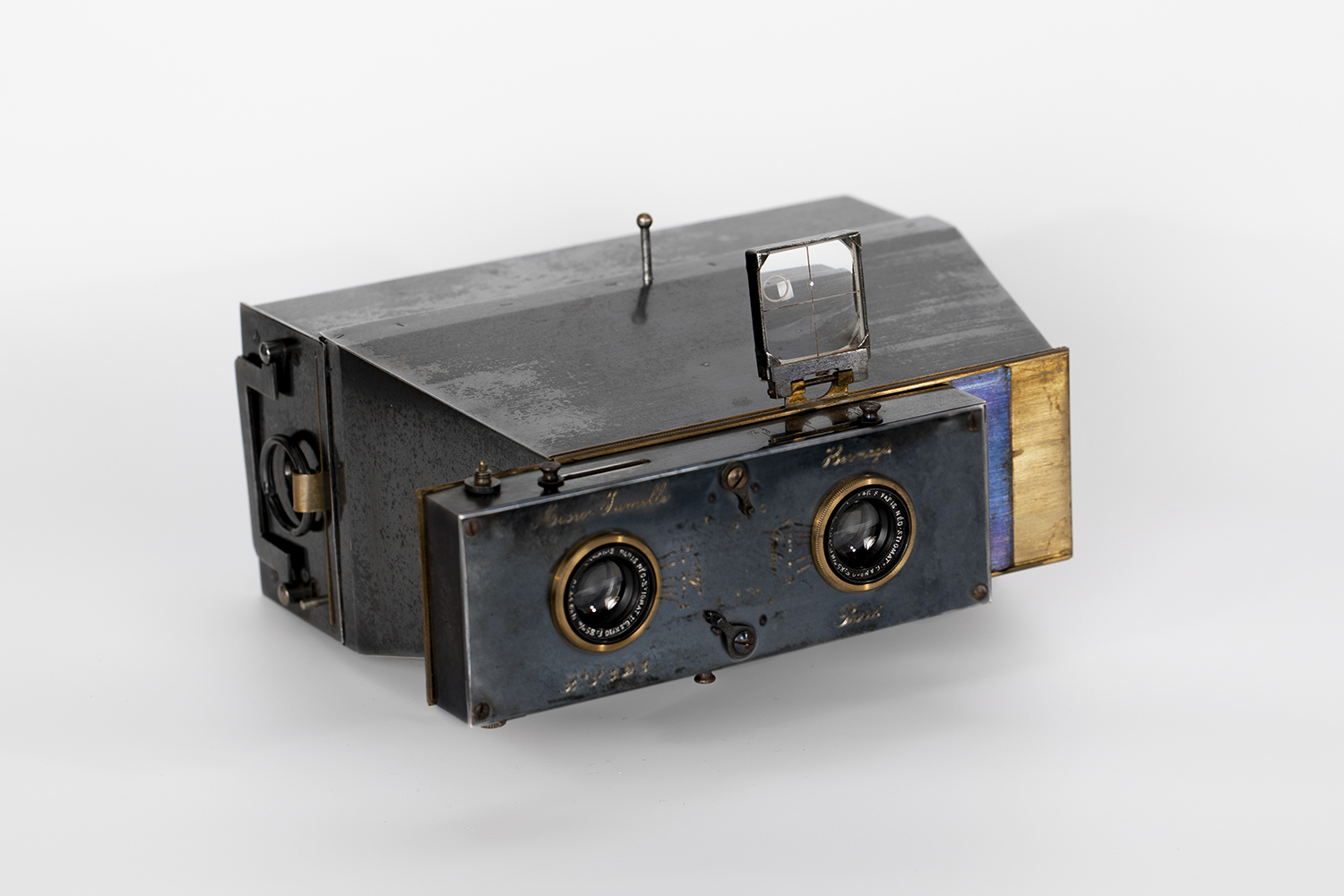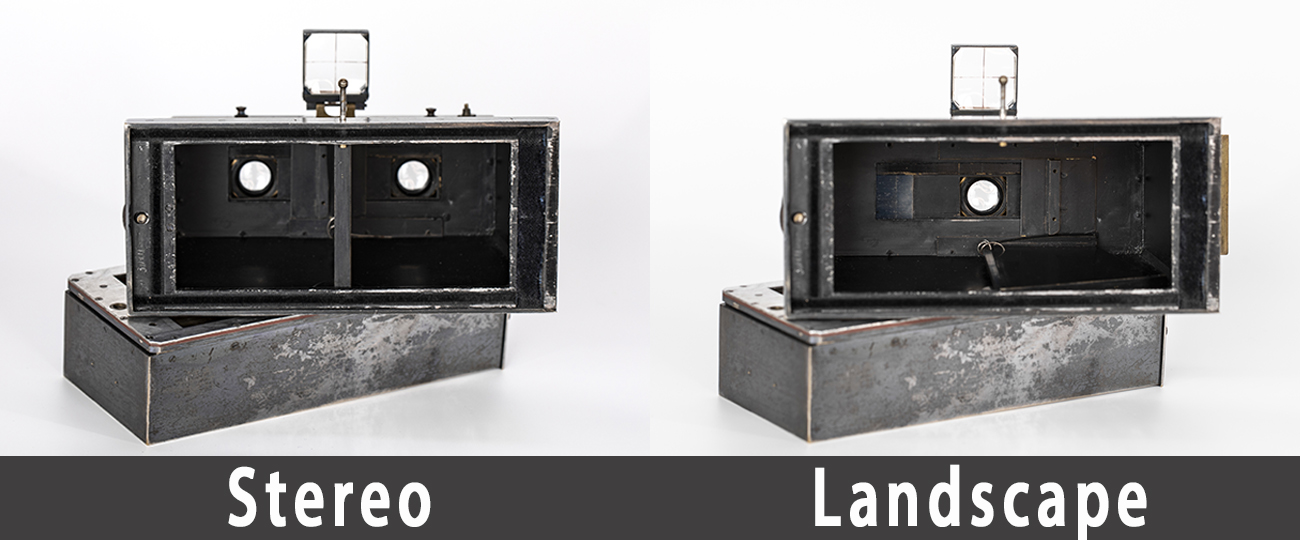
Jumelle refers to a type of cameras found in the late 19th and early 20th centuries. Jumelle means ‘twin’, and by extension ‘binocular’, in French. Jumelle cameras are tapered from the narrow lens board at the front of the camera to a wider glass plate holder at the back, giving a shape that resembles a pair of binoculars. Once such camera in my collection is the Hermagis Micro Jumelle.
 The Hermagis company was established in 1845 by Hyacinthe Hermagis. Starting 1864, his son, Jules Fleury-Hermagis, continued the business and renamed the company to Fleury-Hermagis. The company produced just over 20 different camera models but are best known for their lens production.
The Hermagis company was established in 1845 by Hyacinthe Hermagis. Starting 1864, his son, Jules Fleury-Hermagis, continued the business and renamed the company to Fleury-Hermagis. The company produced just over 20 different camera models but are best known for their lens production.
 Manufactured circa 1909, the Micro Jumelle is a heavy gun blued metal camera with beautiful gold accents. The ‘Micro’ designation, for this heavy metal camera is relative in comparison only to other Jumelle cameras of the period. The Micro Jumelle exposed 6 cm (~ 2 ⅓ in) x 13 cm (~ 5 ⅛ in) glass plates held in a magazine containing a total of 8 original glass plates when fully packed. For comparison the common 35 mm negative is only 24 mm (~ 17/18 in) x 36 mm (~ 1 3/7 in). The lenses are Hermagis Paris Neo-Stigmat 1:6.8 F 85mm with sequential serial numbers. A sliding knob located under the lens plate focuses the pair of lenses in unison.
Manufactured circa 1909, the Micro Jumelle is a heavy gun blued metal camera with beautiful gold accents. The ‘Micro’ designation, for this heavy metal camera is relative in comparison only to other Jumelle cameras of the period. The Micro Jumelle exposed 6 cm (~ 2 ⅓ in) x 13 cm (~ 5 ⅛ in) glass plates held in a magazine containing a total of 8 original glass plates when fully packed. For comparison the common 35 mm negative is only 24 mm (~ 17/18 in) x 36 mm (~ 1 3/7 in). The lenses are Hermagis Paris Neo-Stigmat 1:6.8 F 85mm with sequential serial numbers. A sliding knob located under the lens plate focuses the pair of lenses in unison.
 Not all Jumelle cameras are Stereo Cameras (taking a matching pair of images to create a 3D image.) The term refers only to the shape of the camera. Both mono and stereo Jumelle cameras were produced. The Hermagis Micro Jumelle was an ingenious engineered camera designed to do both stereo images, and wide panoramic vistas. It accomplished this by a sliding lens board and collapsing center separation wall. When the camera is in stereo mode, both lenses allow light through the camera and are kept separated by a divider down the center of the camera. In stereo mode the camera takes two matched images at the same time but from two different perspectives set roughly to the same distance apart as human eyes. When later developed the glass slide is viewed through a simple Stereo Viewer the see the 3D effect (stereo) image. When not wishing to take stereo images the photographer would shift the lens board, moving the left lens to the middle of the camera. In this landscape mode the spring activated center separation board is pushed out of sight to the base of the camera and the right lens is blocked. This allows the left lens to expose the entire glass plate creating a panoramic landscape image.
Not all Jumelle cameras are Stereo Cameras (taking a matching pair of images to create a 3D image.) The term refers only to the shape of the camera. Both mono and stereo Jumelle cameras were produced. The Hermagis Micro Jumelle was an ingenious engineered camera designed to do both stereo images, and wide panoramic vistas. It accomplished this by a sliding lens board and collapsing center separation wall. When the camera is in stereo mode, both lenses allow light through the camera and are kept separated by a divider down the center of the camera. In stereo mode the camera takes two matched images at the same time but from two different perspectives set roughly to the same distance apart as human eyes. When later developed the glass slide is viewed through a simple Stereo Viewer the see the 3D effect (stereo) image. When not wishing to take stereo images the photographer would shift the lens board, moving the left lens to the middle of the camera. In this landscape mode the spring activated center separation board is pushed out of sight to the base of the camera and the right lens is blocked. This allows the left lens to expose the entire glass plate creating a panoramic landscape image.
Most Jumelle style cameras were top quality cameras using equally top quality glass plates. Their era of popularity was short, hastened both by rapid improvement in film beginning around 1910, and an increased desire for smaller, easier carried cameras. The use of cameras requiring glass plates for ordinary photography of any kind became increasingly rare by the 1920s.
Photographer: John Baltz
 John is a seasoned professional with nearly 30 years in photography. A native to Northwest Arkansas, John’s first interest in photography began with collecting cameras as a child from antique markets around town. Later, John received a degree in Computer Science from the University of Arkansas. It is his strong knowledge in digital photography, along with a love for the the history of photography that provides for a unique sense of creativity driving many of his projects.
John is a seasoned professional with nearly 30 years in photography. A native to Northwest Arkansas, John’s first interest in photography began with collecting cameras as a child from antique markets around town. Later, John received a degree in Computer Science from the University of Arkansas. It is his strong knowledge in digital photography, along with a love for the the history of photography that provides for a unique sense of creativity driving many of his projects.


